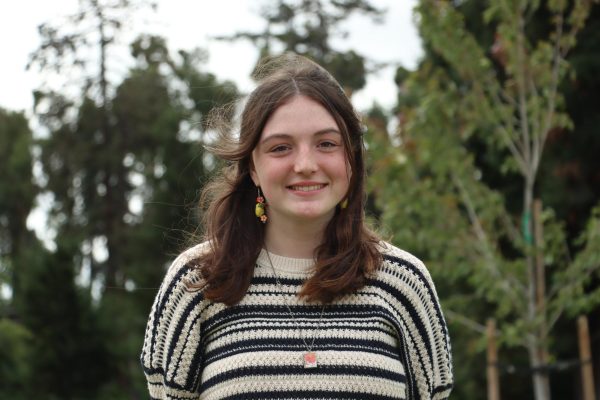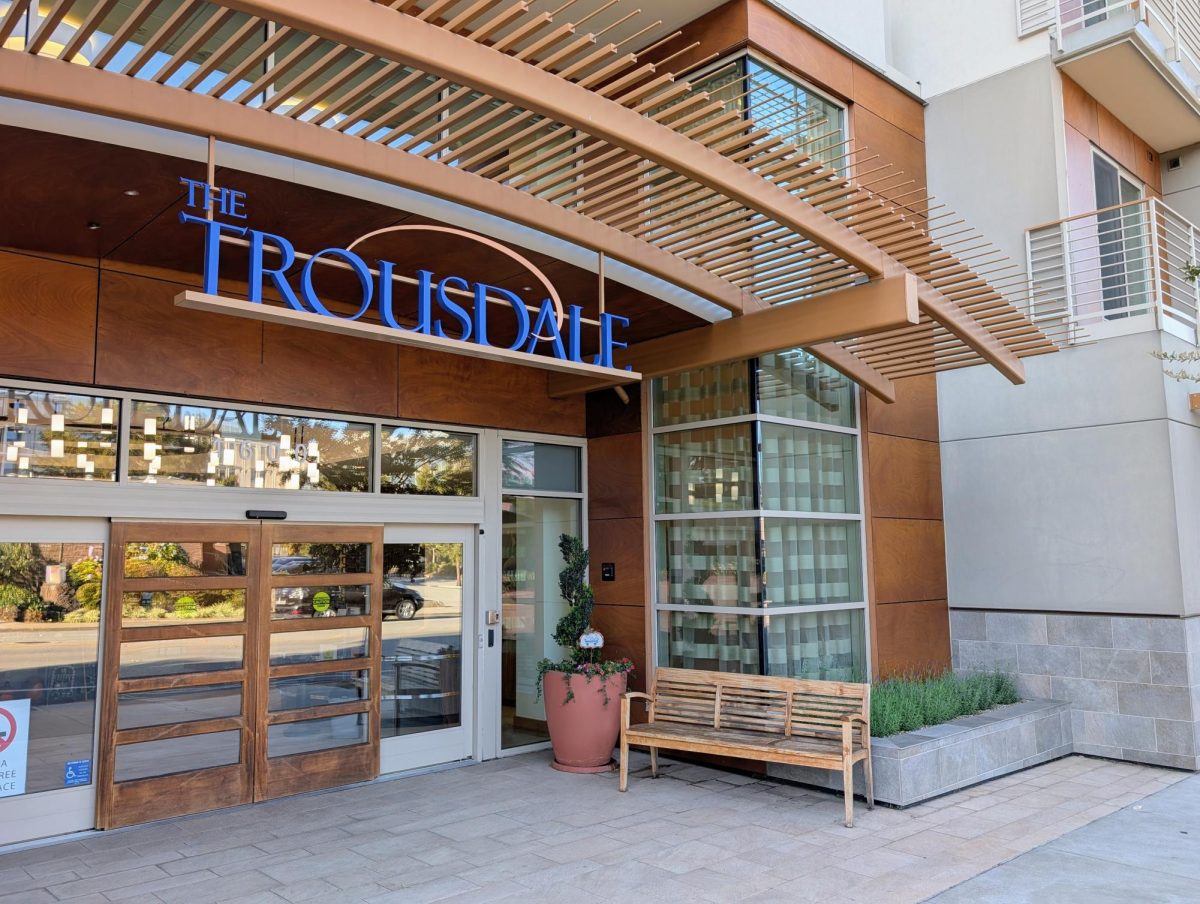Around the dinner table: students share holiday recipes rooted in tradition

Crisp. Sweet. Eggy. Unexpected. These are some of the words junior Kagan Goldstein attributes to noodle kugel, a Jewish dish, that has been a tradition to make with her family each Hanukkah for five to six years – Yet it’s not the bread pudding-like taste, the fun appearance, or the burnt spaghetti on top that make it memorable, but rather the memories and connections to Goldstein’s heritage, religion, and family.
Goldstein makes noodle kugel with her mother and brother every Hanukkah, and often makes it with her grandmother, who lives in Oregon, when they visit her in November for Thanksgiving or Goldstein’s brother’s birthday.
“I think [my favorite memory] is just the memory of baking or cooking with my family. I always think it’s really fun. My mom loves music, so we always have music playing in the background,” Goldstein said. “But just memories around the kitchen together is what I associate with this dish.”
Goldstein’s grandmother and mother grew up in Russia where they made noodle kugel, along with other Jewish and Russian dishes. Her grandmother lived in a rural area, where she grew a lot of her own food, meaning Goldstein’s mother did not eat out until moving to the U.S. The recipe, passed down from Goldstein’s grandmother, not only connects Goldstein to her family’s culture, but also gives her the opportunity to learn more about her family’s history before coming to the U.S.
“In college is when she really discovered food. Her first time eating Chinese food was when she was 19,” Goldstein said. “She discovered a lot of food through dating, even. When she would go on dates with guys, they would go to restaurants, and she would always take more interest in the food, rather than her company. So I thought that was kind of funny, and also just shows how she grew up.”
Goldstein was raised in an atheist household, and doesn’t think of herself as a very religious person. But like making noodle kugel, celebrating Hanukkah and lighting the menorah has gifted her with a connection to the religion and its culture.
“We have my great grandmother’s menorah, which is really special to my mom, and honestly, I’m usually the one who lights it. I like to do it on my own, I’ll take a break from my homework and I’ll just sit and light the candle,” Goldstein said. “I think it’s a really cute tradition, and I like feeling that connection, knowing that millions of people around me are doing the same thing, whether next door or across the world.”
Goldstein hopes the traditions with noodle kugel, whether it be spending time with family or finding another way to connect with one’s culture, will be passed down to future generations.
“I think the bigger picture is just not losing your heritage and where you come from and your values, and I think cooking is a very niche way of expressing it, but I think that it is more important than many may think,” Goldstein said.

Every New Year’s, freshman Haruka Ota eats toshikoshi soba with her family. According to Ota, toshikoshi roughly means “to jump from the old year into the new.” The soup is eaten by many Japanese people during the New Year. Every variation of the soup has some type of broth as well as soba noodles, but from there they can vary greatly.Ota’s family recipe includes fried mochi, which they cut, bake, and place inside the broth, adding a distinctive touch to the dish.
“The soups that we make can have anything you want in them. It doesn’t always have to have tofu and seaweed, you can add other things inside. So sometimes we add fish, and if you’re feeling different you can add carrots, even carrots and meat, and make it a bit more brothy,” Ota said.
According to Ota, soba noodles represent longevity in Japanese culture.
“You add soba noodles in it, or some sort of noodles, because [in Japanese tradition] and other traditions, noodles represent health and long life. So that’s why you eat it [during] New Year’s,” Ota said.
Ota and her mother make the dish together every New Year’s to preserve the tradition that Ota’s grandmother began.
“My grandmother used to make this dish for us, because before she would come over to the U.S. and make this dish for us, but now she’s too old, so she can’t come. But those are some fond memories I have,” Ota said.

Originating in the Philippines, this fluffy, soft, and delicious dessert carries many memories for senior Rhian Cordero’s family. Mamon, similar to a sponge cake, is relatively easy to make and can be paired with a variety of toppings such as fruit, chocolate, and ube — a sweet purple yam often picked by Cordero’s family.
“When I was a kid, it was really easy for me to make, and my grandma would teach it to me a lot, and it has a really deep meaning in my family,” Cordero said.
Mamon reminds Cordero of the lessons she learned when visiting her grandmother’s bakery in the Philippines.
“When I went to the Philippines, my grandma would teach me this in her bakery, and I remember all of the bakers trying to teach me how to make this dish, and I had a lot of fun making it.”
To Cordero, mamon is more than just a dessert; it’s a cherished family tradition. Cordero hopes to pass the recipe on to future generations and friends in order to keep the tradition alive and spread the joy it has brought to her family.
“She passed this down to me as something I can make for friends and families, and so I can share our recipe,” Cordero said.
This simple and quick recipe is perfect for the holidays, bringing warmth and a sense of tradition. Its versatility makes it easy to customize with toppings and mix-ins, allowing for a variety of flavors.

For freshman Yousef Alfakhouri, being able to make dolmas is a significant part of his family’s religion and heritage and a long-lasting tradition his family has carried with them through multiple generations.
“[Dolmas have] been in my family for…a long time,” Alfakhouri said. “Everybody in my family makes this meal.”
Dolmas consist of grape leaves stuffed with rice and beef cooked in a pot, and can be served with lemon on the side. Originating in the Middle East the dish holds special significance for Alfakhouri, connecting his family to their former home in Dubai.
“It’s a recipe that my mom’s parents used to [make] and a lot of people we know [make] in the Middle East,” Alfakhouri said. “The taste is really good…it’s wrapped and hot. It doesn’t look that good, but once you taste it, you expect it to taste good and it [does].”
Alfakhouri and his family eat dolmas year-round, often making the dish during the month of Ramadan. The dish holds a special part of Alfakhouri’s identity, as his family has been making dolmas for almost 10 years. Alfakhouri said making the dish together with his family is one of his fondest childhood memories.
“When I was young, I made it for the first time with my family [which is] probably one of my best memories,” Alfakhouri said. “We just enjoy making it together.”
Your donation will support the student journalists of Burlingame High School - CA. Your contribution will allow us to purchase equipment and cover our annual website hosting costs.





























